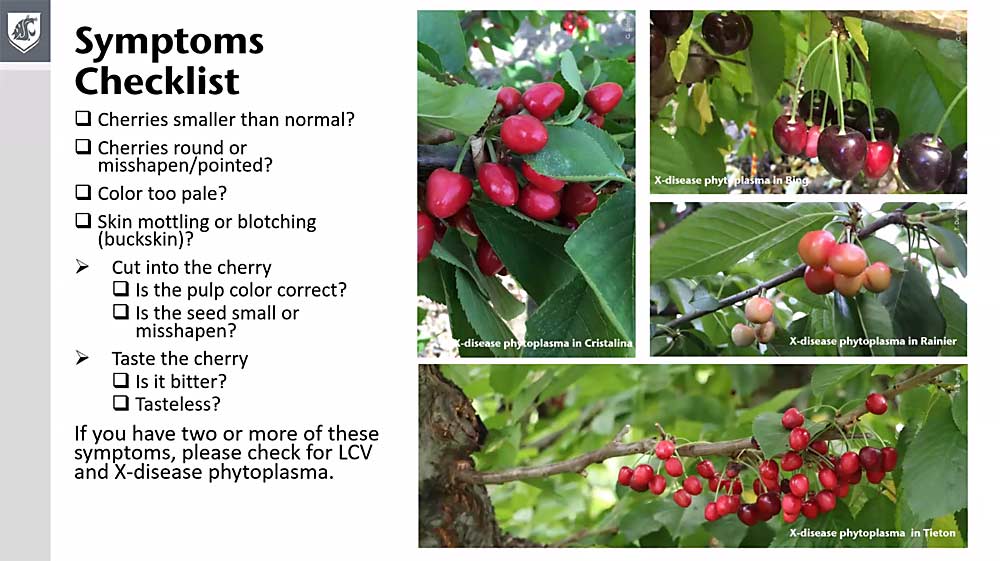
As cherry harvest gets underway across the Northwest, it’s the ideal time to scout for little cherry disease symptoms. Little cherry disease is an umbrella term for similar symptoms caused by two groups of pathogens: the little cherry viruses and the X phytoplasma.
The symptoms that scouts need to keep an eye out for can vary substantially by cultivar, severity of infection and the pathogen, according to pathologist Scott Harper, who described the range of symptoms to look for in a webinar hosted by Washington State University and Oregon State University on May 22.
The typical symptoms — small and misshaped fruit, poor color development and lack of flavor — can be confused with unripe fruit until very close to harvest, he said. That’s why scouting just before or during harvest is critical, even though it’s already a very busy time for orchard staff.
Harper suggested scouts use a checklist approach to account for the wide variety of symptom expressions. After looking for size, shape and color discrepancies, scouts should look for skin mottling or blotching, a characteristic of X infection sometimes called “buckskin.” Next, cut into fruit to look at pulp color and seed size and shape. Lastly, he recommends tasting the cherry to see if it is bitter or tasteless.
When symptoms are found, WSU extension specialist Tianna DuPont recommends flagging and numbering the trees, as well as recording the location with a GPS unit or cell phone. The next course of action depends on whether or not the presence of pathogens has been confirmed in the block in the past.
If some trees in the orchard previously tested positive for either pathogen, DuPont recommended growers pull out all symptomatic trees as soon as possible to reduce the spread.
But in blocks where symptoms are found for the first time, growers should send samples to the lab. For the most accurate tests, DuPont and Harper recommend collecting four 5-inch-long cuttings that contain leaves and fruit from the symptomatic branches on the tree.
New training materials are now available from WSU and OSU, including fliers and booklets of symptoms. Those are being distributed by warehouse field staff, and printable versions can also be found online at treefruit.wsu.edu/article/x-disease-phytoplasma-little-cherry-virus-scouting-sampling/. The online resources will include a training video soon, DuPont said.
Watch the video below for a snapshot of sample collecting for little cherry disease.
—by Kate Prengaman






Leave A Comment